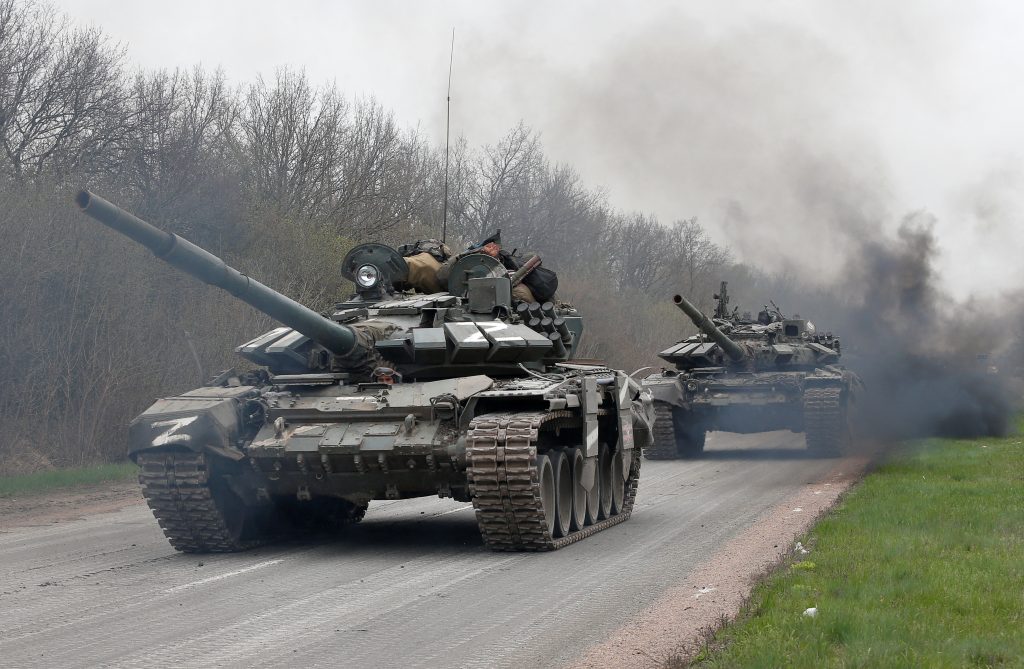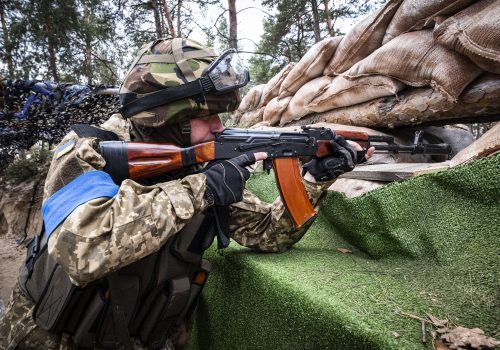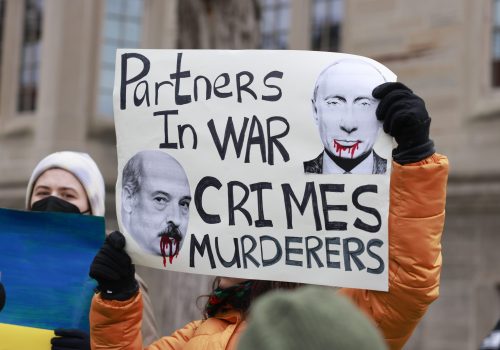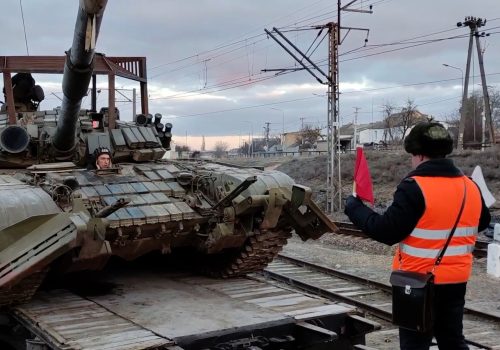Apparently, Ukraine is not the only country Russia has been plotting to invade in recent years. In the summer of 2020, Russia allegedly developed a detailed plan to invade and occupy Belarus according to information released by Ukrainian military intelligence.
“After the falsification of the presidential election in Belarus, the Russian Federation developed a plan to invade and suppress popular protests,” the Ukrainian Defense Ministry’s Main Intelligence Directorate stated on April 19. To support its claim, Ukrainian intelligence released what it says is a secret Russian military document that lays out the justification and plan for an invasion of Belarus.
The document noted the “tense” situation in Belarus following the country’s deeply flawed August 9, 2020 presidential election. It referenced the “subversive activities” of opposition leader Sviatlana Tsikhanouskaya from exile in Lithuania and alleged that a “large-scale information campaign” was underway to build consensus for violent regime change in Belarus. If this could not be prevented, the document argued, Russia could be drawn into a full-scale war with NATO.
The document outlined a “plan to regroup the formations and military units of the First Tank Army in the vicinity of the mission” to invade Belarus. According to the plan, the troops would deploy “under the cover of participating in a joint exercise with the armed forces of the Republic of Belarus.”
The authenticity of the information made public by Ukraine could not be independently verified. If accurate, the Ukrainian intelligence claims suggest that a full-scale invasion of Belarus was a very real possibility in the summer of 2020, less than two years before Russia did conduct a full-scale invasion of Ukraine.
The existence of a Russian plan to invade Belarus is plausible considering the tense state of relations between Moscow and Minsk in the period leading up to the August 2020 presidential election in Belarus. In contrast to today’s close strategic alliance between Vladimir Putin and Alyaksandr Lukashenka, there was significant tension in the relationship throughout 2019 and in the first half of 2020.
Facing sanctions and a struggling economy, Putin had scaled back Russian subsidies and economic assistance to Belarus. Moscow was also pressuring Belarus to make a range of concessions such as hosting a new Russian military base on its territory, integrating the country’s armed forces more deeply, and accepting a revived economic integration project that would have effectively ended Belarusian sovereignty.
For his part, Lukashenka was resisting these efforts and attempting to mend Minsk’s relations with the West. In early 2020, US Secretary of State Mike Pompeo traveled to Belarus in an effort to “normalize” strained ties with the country.
During a meeting with Belarusian Foreign Minister Uladzimer Makei at the time, Pompeo said: “The United States wants to help Belarus build its own sovereign country. Our energy producers stand ready to deliver 100 percent of the oil you need at competitive prices. Your nation should not be forced to be dependent on any one partner for your prosperity or for your security.”
There were indications at the time that Russia’s military intelligence, the GRU, and its Foreign Intelligence Service, the SVR, were alarmed by Lukashenka’s efforts to preserve Belarusian independence by attempting to move the country closer to the West.
Eurasia Center events

The geopolitical situation has changed dramatically over the past two years in Moscow’s favor. Lukashenka’s brutal crackdown on dissent following the August 2020 Belarusian presidential election and his resulting alienation from the West have led to growing dependence on the Kremlin. This appears to have removed the need for a full-scale Russian invasion of Belarus.
Putin has gained everything he wants in Belarus without firing a shot. Lukashenka is completely reliant on the Kremlin, which has enabled Russia to pull off what amounts to a “soft annexation” of the country. Belarus has become a de facto extension of Russia’s Western Military District, with Moscow able to expand its economic and political footprints in the country.
Belarus has also found itself caught up in Putin’s Ukraine War. While Minsk has not yet contributed troops to Russia’s invasion of Ukraine, Lukashenka has allowed Russia to use Belarus as a staging area for Russian troops and let Putin launch airstrikes against Ukrainian cities from Belarusian territory.
This supporting role in the conflict has sparked concerns that Russia’s dominant position in Belarus could come under threat. Public opinion in Belarus is strongly opposed to the war in Ukraine, with efforts underway to disrupt the transit of Russian troops via sabotage of the country’s railway network. Meanwhile, hundreds of Belarusians have joined volunteer battalions fighting on Ukraine’s side. As the war drags on, the possibility for domestic destabilization within Belarus could rise significantly.
For the time being, Putin finds himself bogged down in Ukraine. However, he could yet turn his attention once again to a full-scale military takeover of Belarus if public opposition to Belarusian involvement in the invasion of Ukraine continues to mount and threatens to undermine Russian influence. Based on recent Ukrainian claims, the plans for such an operation may already be in place.
Brian Whitmore is a nonresident senior fellow at the Atlantic Council’s Eurasia Center, an Assistant Professor of Practice at the University of Texas at Arlington, and host of The Power Vertical Podcast.
Further reading
The views expressed in UkraineAlert are solely those of the authors and do not necessarily reflect the views of the Atlantic Council, its staff, or its supporters.

The Eurasia Center’s mission is to enhance transatlantic cooperation in promoting stability, democratic values and prosperity in Eurasia, from Eastern Europe and Turkey in the West to the Caucasus, Russia and Central Asia in the East.
Follow us on social media
and support our work
Image: Russian tanks in eastern Ukraine. April 17, 2022. (REUTERS/Alexander Ermochenko)




